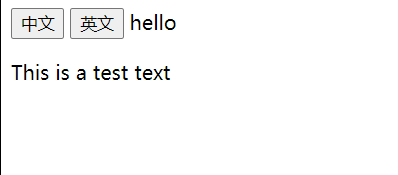完整示例,下拉到底部
安装 Flask-Babel
Flask-Babel 是 Flask 的翻译扩展工具。安装命令如下:
pip install flask-babel
安装它的时候会顺便安装 Babel、pytz、speaklater 这三个包,其中 Babel 是 Python 的一个国际化工具包。pytz 是处理时区的工具包,speaklater 相当于是 Babel 的一个辅助工具。
在 flask 项目应用 babel
新建一个 app.py 文件:
from flask import Flask, render_template, request
from flask_babel import Babel, gettext as _
app = Flask(__name__)
app.config['BABEL_DEFAULT_LOCALE'] = 'en'
app.config['BABEL_DEFAULT_TIMEZONE'] = 'UTC'
babel = Babel(app)
@babel.localeselector
def get_locale():
return request.accept_languages.best_match(['zh', 'en'])
@app.route('/')
def hello():
day = _("Saturday")
return render_template('index.html', day=day)
if __name__ == '__main__':
app.debug = True
app.run()
从 flask_babel 引入 Babel 模块和 gettext 函数,因为 gettext 函数被引用的次数太多了,为了方便手写,就将其 import 为 “_”。
通过下列方式初始化 babel 应用:
babel = Babel(app)
设置 babel 的配置项:
app.config['BABEL_DEFAULT_LOCALE'] = 'en'
app.config['BABEL_DEFAULT_TIMEZONE'] = 'UTC'
默认语言设置为英语,默认时区设置为 UTC。
我们需要定义一个函数来让 babel 获取当前的语言选项:
@babel.localeselector
def get_locale():
return request.accept_languages.best_match(['zh', 'en'])
该函数从浏览器的 cookies 中的 accept_languages 获取语言设置,视情况返回 zh(中文)或 en(英文)。
下划线函数,如:_("Saturday"),就是需要被翻译的字符串。
现在新建 templates 目录,在里面新建 index.html 文件:
<head>
<meta charset="UTF-8">
<title>index</title>
</head>
<p>{{ _("Hello, world!") }}</p>
<p>{{ _("It's %(day)s today", day=day) }}</p>
设置 Babel
接下来我们要做的是 babel 的配置。在 app.py 的同级目录创建一个叫 babel.cfg 的文件,内容如下:
[python: **.py]
[jinja2: **/templates/**.html]
extensions=jinja2.ext.autoescape,jinja2.ext.with_
生成翻译模板
$ pybabel extract -F babel.cfg -o messages.pot .
执行上述命令后会生成 messages.pot 文件,这就是我们的的翻译模板文件。内容大致这样:
# Translations template for PROJECT.
# Copyright (C) 2018 ORGANIZATION
# This file is distributed under the same license as the PROJECT project.
# FIRST AUTHOR <EMAIL@ADDRESS>, 2018.
#
#, fuzzy
msgid ""
msgstr ""
"Project-Id-Version: PROJECT VERSION\n"
"Report-Msgid-Bugs-To: EMAIL@ADDRESS\n"
"POT-Creation-Date: 2018-10-26 10:04+0800\n"
"PO-Revision-Date: YEAR-MO-DA HO:MI+ZONE\n"
"Last-Translator: FULL NAME <EMAIL@ADDRESS>\n"
"Language-Team: LANGUAGE <LL@li.org>\n"
"MIME-Version: 1.0\n"
"Content-Type: text/plain; charset=utf-8\n"
"Content-Transfer-Encoding: 8bit\n"
"Generated-By: Babel 2.6.0\n"
#: app.py:13
msgid "Saturday"
msgstr ""
#: templates/index.html:1
msgid "Hello, world!"
msgstr ""
#: templates/index.html:2
#, python-format
msgid "It's %(day)s today"
msgstr ""
翻译
接下来我们创建中文翻译:
$ pybabel init -i messages.pot -d translations -l zh
执行命令后会生成一个 translations 文件夹,翻译模板就在
translations/zh/LC_MESSAGES/messages.po 文件里。
在该文件中我们可以给需要翻译的字符串进行翻译:
# Chinese translations for PROJECT.
# Copyright (C) 2018 ORGANIZATION
# This file is distributed under the same license as the PROJECT project.
# FIRST AUTHOR <EMAIL@ADDRESS>, 2018.
#
msgid ""
msgstr ""
"Project-Id-Version: PROJECT VERSION\n"
"Report-Msgid-Bugs-To: EMAIL@ADDRESS\n"
"POT-Creation-Date: 2018-10-26 10:04+0800\n"
"PO-Revision-Date: 2018-10-26 10:03+0800\n"
"Last-Translator: FULL NAME <EMAIL@ADDRESS>\n"
"Language: zh\n"
"Language-Team: zh <LL@li.org>\n"
"Plural-Forms: nplurals=1; plural=0\n"
"MIME-Version: 1.0\n"
"Content-Type: text/plain; charset=utf-8\n"
"Content-Transfer-Encoding: 8bit\n"
"Generated-By: Babel 2.6.0\n"
#: app.py:13
msgid "Saturday"
msgstr "星期六"
#: templates/index.html:1
msgid "Hello, world!"
msgstr "哈喽,世界!"
#: templates/index.html:2
#, python-format
msgid "It's %(day)s today"
msgstr "今天是%(day)s"
编译翻译结果
翻译完后执行下面的命令:
$ pybabel compile -d translations
这时会编译出 message.mo 文件。如果上述命令无法生成 messages.mo 文件,那你需要将 message.po 中的 #, fuzzy 删除。
编译完成后翻译就已经生效了,这时来看看我们的网页:

看看浏览器的 accept_languages 信息,可以看到是中文:

更新翻译
当我们修改了 messages.po 文件中的翻译时,可用以下命令更新:
pybabel update -i messages.pot -d translations
然后重新执行编译命令:
pybabel compile -d translations
作者:SingleDiego
链接:https://www.jianshu.com/p/fe4c6692a127
来源:简书
著作权归作者所有。商业转载请联系作者获得授权,非商业转载请注明出处。
补充内容:
在flask-babel中掌管语言变化的是如下函数:
@bable.localeselector
def get_locale():
在该函数中返回语言包,就能实现界面的语言变化
下方为一个完整的示例:
# app.py
from flask import Flask, render_template, request, make_response, jsonify
from flask_babel import Babel, gettext as _
app = Flask(__name__)
app.config['BABEL_DEFAULT_LOCALE'] = 'en' # 设置默认语言为 en
babel = Babel(app)
@babel.localeselector
def get_locale(): # 核心,当网站含有locale的cookie,且符合['zh', 'en']
cookie = request.cookies.get('locale')
if cookie in ['zh', 'en']:
return cookie
return request.accept_languages.best_match(app.config.get('BABEL_DEFAULT_LOCALE')) # 没有cookie时,默认为 en
@app.route('/test') # 测试页面
def test():
text = _('hello') # 需要翻译的文本
return render_template('test.html', text=text)
@app.route('/set_locale/<locale>') # 用ajax请求来设置cookie
def set_locale(locale):
response = make_response(jsonify(message='update success'))
if locale:
response.set_cookie('locale', locale, 60 * 60)
return response
<!--test.html-->
<!DOCTYPE html>
<html lang="en">
<head>
<meta charset="UTF-8">
<title>Title</title>
</head>
<body>
<button type="button" class="locale" id="zh" data-value="{{ url_for('set_locale', locale='zh') }}">中文</button>
<button type="button" class="locale" id="en" data-value="{{ url_for('set_locale', locale='en') }}">英文</button>
{{ _('%(text)s', text=text) }}
<p>
{{ _("This is a test text") }}
</p>
</body>
<script src="http://libs.baidu.com/jquery/2.0.0/jquery.min.js"></script>
<script>
$(document).on('click', '.locale', function () {
var val = $(this).attr('data-value');
$.ajax({
url: val,
type: 'GET',
success: function (ret) {
console.log(ret);
location.reload();
}
})
});
</script>
</html>
效果:

评论列表
已有0条评论